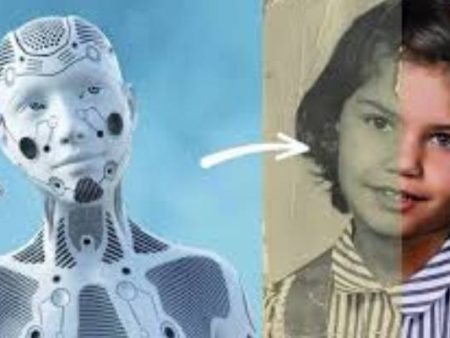Photographs have always been more than subjects and smiles. Look closely, and you’ll notice the subtle story told in the background: a bookshelf stacked with unread novels, a café window fogged from conversation, or even just the imperfect wallpaper of a childhood home.
Backgrounds are not just “filler.” They’re context, mood, sometimes even characters in their own right.
And yet, for decades, editors and designers have spent hours erasing them, replacing them, or simplifying them.
Enter AI. Removing backgrounds with artificial intelligence has become so common that it’s often just one click away.
But the question that lingers is both practical and philosophical: Is this a blessing of efficiency—or are we quietly stripping creativity from photography itself?
The Rise of AI Background Removal
AI background removal tools aren’t new, but their speed and accessibility are unprecedented. Tools like Remove.bg, Canva’s Magic Eraser, Photoshop’s Generative Fill, and even TikTok’s smart editing features allow anyone—professional or not—to cut a subject from its surroundings instantly.
The appeal is obvious:
- E-commerce: Product images look polished and consistent.
- Corporate headshots: A cluttered office becomes a clean, neutral background.
- Content creation: Social media influencers save hours of manual editing.
What used to take meticulous masking, pen tools, and hours of patience is now as simple as uploading a file.
But as with all shortcuts, the story isn’t that simple.
Efficiency: A Photographer’s Dream?
Imagine being a wedding photographer with thousands of images to deliver. Half of them have beautiful moments but distracting details: an uncle’s hand creeping into the corner, a fire extinguisher in the ballroom shot, or a guest photobombing a first dance.
Here, AI feels like salvation. This is the exploring in wedding photography: blessing side of the equation.
It gives photographers back their time, helping them focus on storytelling rather than digital cleanup. Clients get flawless images faster. Everyone wins.
And yet—does everyone win?
The Fear: Creativity at Risk
Here’s the uncomfortable part. If AI can instantly remove, replace, or fabricate backgrounds, what happens to the artistry of composition?
Photographers used to anticipate backgrounds, carefully frame subjects against meaningful settings, and use light and texture to enhance the moment.
Now, with AI, that responsibility shifts. Why worry about composition if you can “fix it in post” with a click?
This is where the debate on AI filters vs traditional editing connects. Traditional editing respected process and craft; AI often encourages shortcuts. While not inherently bad, shortcuts risk dulling intentional artistry.
I can’t help but wonder: if every portrait ends up cut from its real context and pasted onto a generic blurred backdrop, aren’t we flattening photography into sameness?
Why Can AI Truly Understand Matters
This leads to a deeper question. Backgrounds don’t just serve aesthetic purposes—they carry emotional meaning.
The messy living room behind a family portrait tells you more about that family than a sterile studio replacement ever could.
Here’s where why can AI truly understand matters comes into play. AI doesn’t understand memory, nostalgia, or subtle imperfection.
It doesn’t know that the old armchair in the corner was where a grandfather always sat, or that the chipped paint behind a couple’s kiss was part of their first apartment.
It only knows what “looks good” according to data. And that’s a different kind of seeing—polished, efficient, but sometimes blind to the very heart of the story.
Case Studies: From Retail to Personal Archives
- E-commerce dominance: Amazon requires product photos on clean white backgrounds. AI makes this a breeze, saving businesses both money and time.
- Family history projects: Many people are now restoring old photographs and using AI to simplify backgrounds. But sometimes, this wipes away historical context—like clothing, furniture, or even handwritten notes on walls.
- Marketing and advertising: Agencies report that background removal tasks that once took hours now take minutes. According to MarketsandMarkets, AI in image editing is projected to grow at 25% annually over the next decade.
These examples highlight the dual nature: undeniable efficiency and equally undeniable risks of oversimplification.
Future of Face-Swapping and Deepfake Editing
Here’s where things get a little more unsettling. Background removal isn’t just about simplification—it opens the door to complete substitution. Once you separate subject from background, you can insert them anywhere.
This bleeds directly into the future of face-swapping and deepfake editing: conversation. When backgrounds are easy to replace, so are faces, bodies, even entire scenes. What starts as harmless editing quickly becomes a tool for misinformation, staged photography, or unethical manipulation.
In this sense, background removal isn’t just a time-saver—it’s the foundation of a much larger shift in how images can be constructed, or faked.
Personal Reflection: The Beauty of Imperfection
I’ll be honest—I’m torn. As someone who loves old photographs, I’ve found myself using AI tools to “clean up” shots of my parents from the 70s. And yes, the results look beautiful. But sometimes I feel uneasy.
That cluttered kitchen, those odd-colored curtains—those weren’t distractions, they were context.
They told me about their life at that moment. By erasing them, I’m also erasing fragments of memory.
It makes me pause and think: is convenience worth the subtle loss of authenticity? For me, sometimes the answer is no.
Statistics on Adoption
- A Pew Research study found that nearly 30% of Americans have used AI editing tools in some form, with background removal among the most popular features.
- Canva, which integrates AI background removal, reported over 500 million images processed in 2023 alone.
- In professional photography, more than 70% of photographers now use AI-assisted editing for background adjustments.
This isn’t niche—it’s mainstream. And growing.
Ethical Questions: Trust and Disclosure
Should clients know if the background was altered? Should museums digitally erase damage in archival photos?
These questions matter because background removal walks the fine line between retouching and rewriting.
If an AI replaces a wedding guest with a sunset, is it still a truthful memory? If a brand inserts products into fabricated settings, is it authentic advertising—or visual deception?
These aren’t abstract—they’re ethical dilemmas happening right now.
Where AI Excels, Where It Fails
Strengths:
- Saves enormous amounts of time.
- Makes professional-quality edits available to non-experts.
- Scales easily for businesses.
Weaknesses:
- Risks homogenization of style.
- Strips away context and story.
- Can be misused for manipulation.
The challenge isn’t AI itself—it’s how we choose to use it.
Looking Forward: Collaboration Over Replacement
Here’s where I land: AI isn’t the enemy. It’s a tool. The danger lies in letting it dictate creativity rather than complement it.
Photographers and editors should use AI to handle the grunt work, but still make intentional decisions about what to keep, what to erase, and what to honor.
In fact, the value of human editors may increase, as clients start asking not just for “clean” images, but for images that feel authentic—something AI alone can’t guarantee.
In the end, maybe it’s not about whether AI is time-saving or creativity-killing. Maybe it’s about whether we allow ourselves to become passive users of shortcuts, or active storytellers who wield AI wisely.
Conclusion: More Than Just Empty Space
Backgrounds are never just empty space. They’re narrative, context, and memory. Removing them with AI can be a blessing—especially when it saves exhausted editors or rescues flawed but meaningful photos. But it can also risk turning images into sterile, storyless shells.
The future of photography depends on balance. Efficiency has its place, but creativity thrives on imperfection, context, and human choice.
If we can keep that in mind, then perhaps AI won’t kill creativity—it will challenge us to redefine it.


